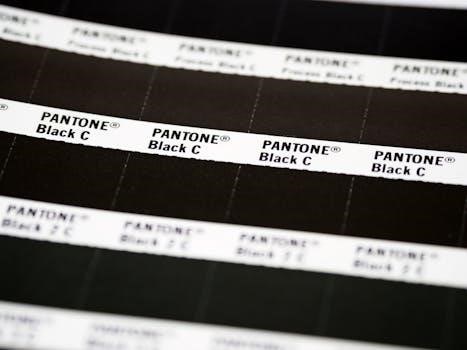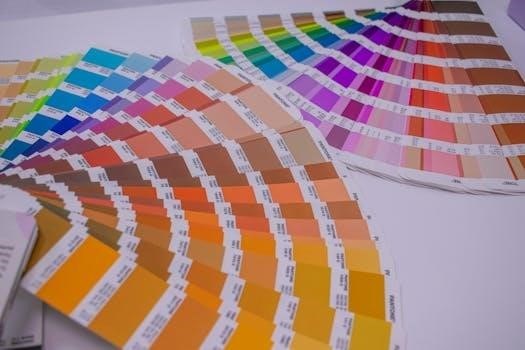Selecting the correct shade for denture gums is crucial for achieving a natural and aesthetically pleasing result. The gum shade significantly contributes to the overall appearance of the dentures‚ influencing how realistic they look and blend with the patient’s natural tissues.

Importance of Gingival Shade Matching
Gingival shade matching is paramount in creating dentures that appear natural and lifelike. A mismatch between the denture base and the patient’s natural gingiva can result in an artificial look‚ undermining the patient’s confidence. The goal is to replicate the subtle variations and tones found in natural gum tissue.
Accurate shade matching ensures that the dentures blend seamlessly with the surrounding oral tissues. This requires careful consideration of factors such as the patient’s skin tone‚ age‚ and ethnicity‚ as these elements often influence the natural gingival color. A well-matched denture base contributes significantly to the overall aesthetics of the smile.
Moreover‚ proper gingival shade matching enhances the patient’s perception of the dentures. When the gums appear natural‚ patients are more likely to feel comfortable and confident wearing their dentures. This can lead to improved speech‚ eating habits‚ and social interactions‚ ultimately improving their quality of life. The selection process must consider these factors.

Factors Influencing Gingival Shade Selection
Several factors play a crucial role in gingival shade selection for dentures. Patient’s skin tone is a primary consideration‚ as it often correlates with the natural color of their gums. Age is another important factor‚ with older individuals typically exhibiting lighter or more faded gingival shades due to decreased vascularity.
Ethnicity also influences gingival pigmentation‚ with certain ethnic groups naturally possessing darker or more pronounced gum coloration. Lighting conditions during shade selection are critical; natural daylight provides the most accurate representation of colors. The presence of any existing oral conditions‚ such as inflammation or discoloration‚ should be carefully noted.
Communication with the patient is essential to understand their preferences and expectations. Some patients may desire a more vibrant or youthful gum color‚ while others prefer a more natural and subtle appearance; The selected denture base material also affects the final shade‚ as different acrylics can exhibit variations in translucency and color saturation.
Consideration of these factors ensures a harmonious blend between the dentures and the patient’s overall appearance.
Available Denture Gum Shade Guides
Various denture gum shade guides are available‚ each offering a range of shades. These guides‚ like the Pala Denture Shade Guide and TCS Shade Guides‚ assist in matching the denture base to the patient’s natural gingiva for optimal aesthetics.
Pala Denture Shade Guide
The Pala Denture Shade Guide is a valuable tool in denture fabrication‚ specifically designed to aid dental professionals in selecting the appropriate gingival shade for dentures. This shade guide offers a range of shades‚ allowing for a more precise match to the patient’s natural gingival tissues.
The guide includes various shades‚ such as Rosa/Pink‚ Rosa/Pink Opaque‚ Rosa/Pink Veined‚ R 50 Veined‚ Clear‚ and Pink. These options enable the creation of dentures that closely mimic the natural appearance of the gums‚ enhancing the overall aesthetics of the prosthesis.
By using the Pala Denture Shade Guide‚ clinicians can ensure a more harmonious blend between the denture base and the surrounding oral tissues. This leads to increased patient satisfaction and a more natural-looking smile. The availability of veined options further enhances the realism of the denture‚ replicating the subtle variations found in natural gingiva. Proper shade selection using this guide is essential for achieving optimal gingival aesthetics in denture fabrication;
TCS Shade Guides
TCS shade guides are specifically designed to assist dental professionals in accurately matching the color of a patient’s natural gingiva to the available shades of TCS (Thermoplastic Comfort System) resin. This ensures that the resulting dentures exhibit a highly natural and aesthetically pleasing appearance.
These shade guides serve as a crucial reference tool during the denture fabrication process. By carefully comparing the patient’s gingival tissue to the TCS shade guide‚ clinicians can select the most appropriate resin shade‚ creating a seamless blend between the denture base and the surrounding soft tissues.
The use of TCS shade guides is particularly important because TCS resin offers unique properties‚ including flexibility and biocompatibility. Matching the shade accurately ensures that these benefits are complemented by excellent aesthetics. Ultimately‚ the TCS shade guides contribute to patient satisfaction by providing dentures that look and feel natural.
Shade Guide Options
When it comes to selecting the appropriate shade for denture gums‚ dental professionals have access to a variety of shade guide options. These guides are designed to aid in the precise matching of denture base materials to the patient’s natural gingival tissues‚ ensuring a seamless and aesthetically pleasing result.
One common type of shade guide utilizes tabs or samples that represent the range of available shades for a particular denture acrylic or resin. These tabs are typically arranged in a logical order‚ making it easier to compare them directly to the patient’s gums.
Some shade guides are specific to certain brands of denture materials‚ such as the Pala Denture Shade Guide‚ while others are more general and can be used with a wider range of acrylics. Additionally‚ digital shade matching systems are emerging as a technological alternative‚ using spectrophotometry to objectively assess gingival color and recommend corresponding denture base shades. The choice of shade guide often depends on the clinician’s preference‚ the materials being used‚ and the desired level of precision.
Ensuring a Natural-Looking Result
Achieving a natural-looking result with dentures hinges on meticulous shade selection and attention to detail. The goal is to create a restoration that seamlessly blends with the patient’s existing oral tissues‚ providing a comfortable and aesthetically pleasing outcome. To ensure a natural appearance‚ several factors must be considered throughout the denture fabrication process.
Firstly‚ accurate shade matching is paramount. Utilizing a reliable shade guide under appropriate lighting conditions is essential to selecting a denture base material that closely resembles the patient’s natural gingival color. It’s also important to consider the influence of surrounding tissues on the overall appearance.
Furthermore‚ proper contouring and texturing of the denture base can enhance the realism of the restoration. Subtle variations in surface texture and lifelike contours mimic the natural appearance of gums‚ avoiding a flat or artificial look. Finally‚ careful attention to the transition between the denture base and the teeth is crucial for achieving a harmonious and natural-looking smile.

Limitations of Single Shade Denture Base
While convenient‚ relying on a single shade of pink for the entire denture base presents inherent limitations in achieving truly natural-looking results. The gingiva‚ or gum tissue‚ exhibits a wide spectrum of colors and variations within the same individual‚ and between different patients.
A uniform pink shade cannot replicate this natural complexity and subtlety. Factors such as ethnicity‚ age‚ and underlying vascularity contribute to the diverse range of gingival shades observed in the population. Using a single shade can lead to a monochromatic and artificial appearance‚ failing to capture the nuances of natural gum tissue.
Furthermore‚ a single shade denture base can create an unnatural contrast with the patient’s remaining natural teeth and surrounding tissues. This discrepancy can be particularly noticeable in patients with thin or translucent gingiva‚ where the underlying structures can influence the perceived color. Therefore‚ a more customized approach to denture base shading is often necessary to achieve optimal aesthetics and a seamless blend with the patient’s unique oral environment.

Matching Denture Base to Gingiva
Achieving a harmonious and natural-looking denture requires careful matching of the denture base to the patient’s gingiva. This process goes beyond simply selecting a pink shade; it involves considering the subtle variations in color‚ translucency‚ and texture present in the natural gums.
The goal is to create a seamless transition between the denture and the surrounding tissues‚ making it difficult to distinguish the artificial from the natural. This can be accomplished by using a shade guide specifically designed for denture gums‚ allowing the dentist or prosthodontist to select a shade that closely resembles the patient’s gingival color.
Factors such as the patient’s skin tone‚ ethnicity‚ and age should also be taken into account when selecting the appropriate shade. In some cases‚ multiple shades may be blended to achieve a more customized and realistic result. The denture base material should also possess appropriate translucency to mimic the natural appearance of gum tissue‚ allowing light to pass through and create a more lifelike effect. Ultimately‚ successful matching requires a keen eye‚ attention to detail‚ and the use of high-quality materials.
Using Shade Guides with Denture Acrylics
Shade guides are indispensable tools when working with denture acrylics to achieve optimal gingival aesthetics. These guides provide a range of color samples that dentists and technicians can use to select the most appropriate shade for the denture base‚ ensuring it closely matches the patient’s natural gum tissue.
When using a shade guide‚ it’s crucial to consider factors such as lighting conditions and the patient’s skin tone to make an accurate assessment. The shade should be evaluated under different light sources to ensure consistency. Many shade guides are designed to be used with specific brands of denture acrylics‚ so compatibility is essential.
The chosen shade can then be communicated to the dental laboratory‚ where the denture base is fabricated using the corresponding acrylic material. Some guides include multiple tabs‚ offering variations in pink‚ veining‚ and opacity to create a more realistic appearance. By carefully utilizing shade guides‚ dental professionals can create dentures that are not only functional but also aesthetically pleasing‚ enhancing the patient’s smile and confidence. Remember to always follow the manufacturer’s instructions for the specific shade guide and acrylic system being used.
Factors such as lighting‚ skin tone‚ and the characteristics of the adjacent tissues must be carefully considered during shade matching. The limitations of single-shade denture bases highlight the need for customized approaches that mimic the subtle variations found in natural gingiva.
By diligently utilizing shade guides in conjunction with high-quality denture acrylics‚ dental professionals can craft prostheses that not only restore function but also enhance the patient’s overall appearance and self-esteem. The pursuit of lifelike gingival aesthetics ultimately contributes to a more confident and natural-looking smile‚ improving the patient’s quality of life. Ongoing advancements in materials and techniques continue to refine the art of denture fabrication‚ pushing the boundaries of what is possible in restorative dentistry and enabling clinicians to deliver increasingly personalized and aesthetically pleasing outcomes.
